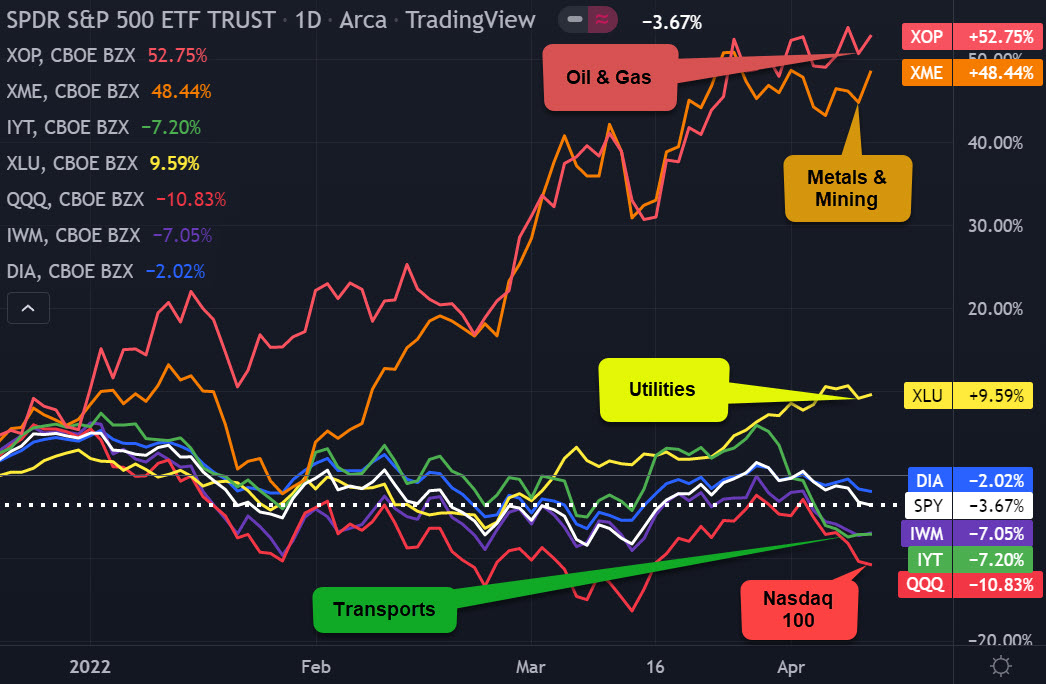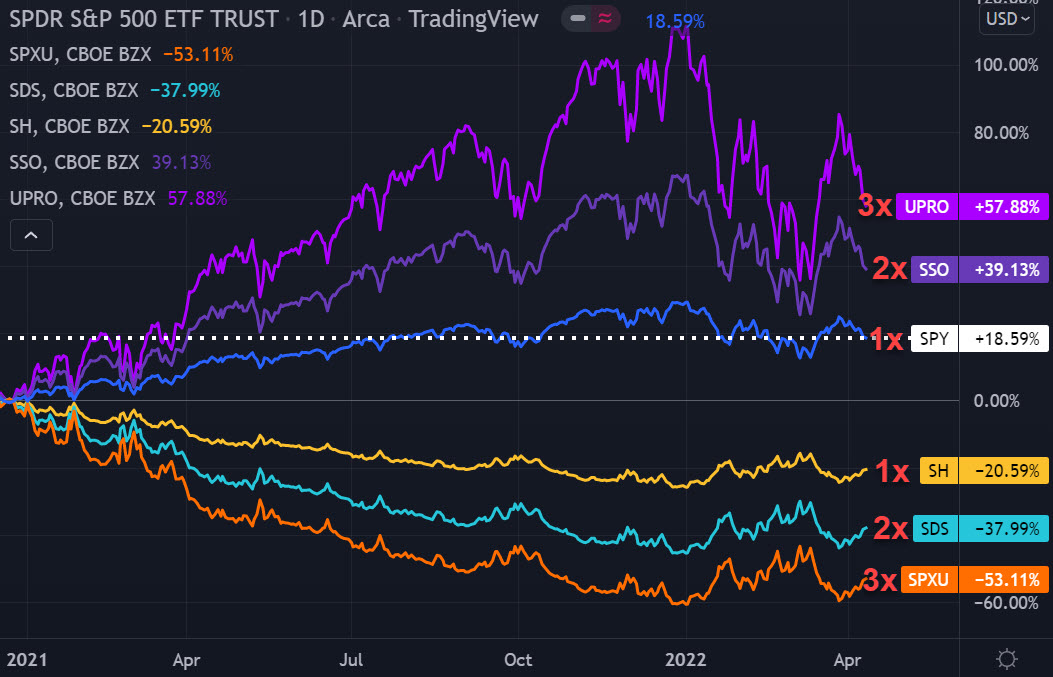Recent rallies in the major indexes have had a hard time hanging onto their gains lately. ETFs like SPDR® S&P Oil & Gas Exploration & Production ETF (NYSE:XOP), SPDR® S&P Metals and Mining ETF (NYSE:XME) and Utilities Select Sector SPDR® Fund (NYSE:XLU) have been experiencing capital inflows. At the same time, other ETFs, like SPDR® Dow Jones Industrial Average ETF Trust (NYSE:DIA), SPDR® S&P 500 (NYSE:SPY), iShares Russell 2000 ETF (NYSE:IWM), iShares Transportation Average ETF (NYSE:IYT) and Invesco QQQ Trust (NASDAQ:QQQ) are still in the red for the year.
Our positions in energy and precious metal ETFs netted us a positive return, while our recent trades in the major stock index ETFs had already booked partial position profits, with the remainder of the positions stopping out for a small break-even profit.
As we experience record inflation numbers reported and central banks raising their lending rates, we are keeping our cash ready and closely monitoring key ETF sectors as compared with the major stock index benchmarks for clues regarding our location within the overall economic cycle.
SPY – SPDR S&P 500 ETF TRUST – Daily Sector Comparison Chart

www.TheTechnicalTraders.com – TradingView
Tactical ETFs For Alternative Strategies
From time to time, we get questions from our subscribers regarding inverse and leveraged ETFs. Inverse and/or leveraged ETFs are not appropriate for everyone. However, for some experienced traders, these tactical ETFs can provide alternative strategies for use in a bear market.
An inverse ETF is an exchange-traded fund (ETF) constructed by using various derivatives to profit from a decline in the value of an underlying benchmark. Inverse ETFs allow investors to make money when the market or the underlying index declines, but without having to sell anything short.
A leveraged exchange-traded fund (ETF) is a marketable security that uses financial derivatives and debt to amplify the returns of an underlying index. While a traditional exchange-traded fund typically tracks the securities in its underlying index on a 1:1 basis, a leverage ETF may be structured for a 2:1 or even a 3:1 ratio.
These ETFs listed below track the underlying S&P 500 benchmark that represents 500 U.S. large caps as selected by S&P’s Index Committee. These ETFs are examples of both inverse and leveraged ETFs:
- SPY vs. SH (1:1 or 1x leverage) – SPY (Bull) is the most recognized ETF and is typically listed in the top ETFs for the largest AUM and greatest trading volume. SH (Bear) provides 1:1 inverse exposure to the S&P 500.
- SSO vs. SDS (2:1 or 2x leverage) – SSO (Bull) seeks a daily 2x return of the S&P 500. SDS (Bear) provides 2:1 inverse exposure to the S&P 500.
- UPRO vs. SPXU (3:1 or 3x leverage) – UPRO (Bull) seeks a daily 3x return of the S&P 500. SPXU (Bear provides 3:1 inverse exposure to the S&P 500.
SPY – SPDR S&P 500 ETF TRUST – Daily S&P 500 Comparison Chart
The following chart gives us a visual of how the ETFs mentioned above are performing against each other over the past 15 months. It should be noted that inverse ETFs carry unique risks that traders should be aware of before participating in them. Some of the risks associated with inverse ETFs are compounding risk, derivative securities risk, correlation risk, and short sale exposure risk.

www.TheTechnicalTraders.com - TradingView
Which stock should you buy in your very next trade?
With valuations skyrocketing in 2024, many investors are uneasy putting more money into stocks. Unsure where to invest next? Get access to our proven portfolios and discover high-potential opportunities.
In 2024 alone, ProPicks AI identified 2 stocks that surged over 150%, 4 additional stocks that leaped over 30%, and 3 more that climbed over 25%. That's an impressive track record.
With portfolios tailored for Dow stocks, S&P stocks, Tech stocks, and Mid Cap stocks, you can explore various wealth-building strategies.
